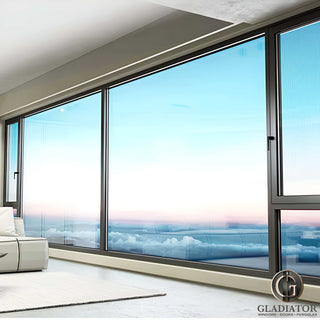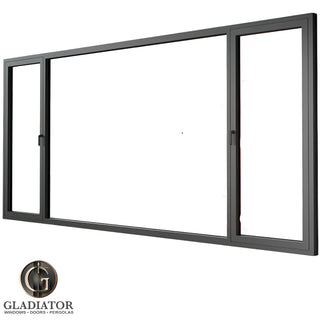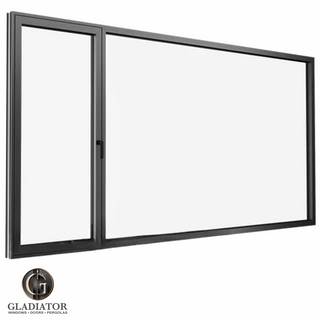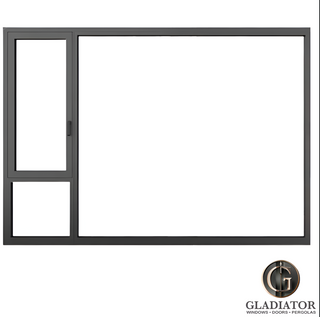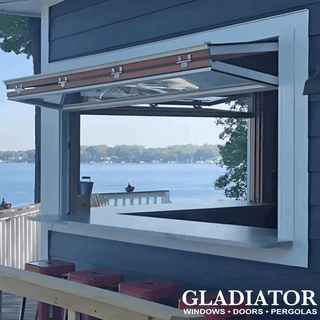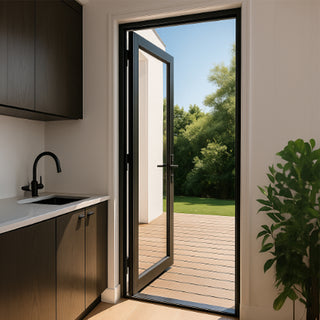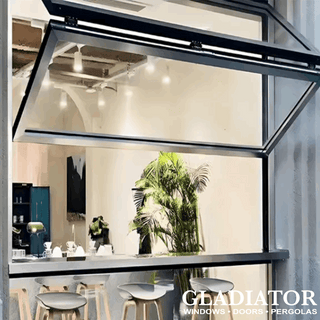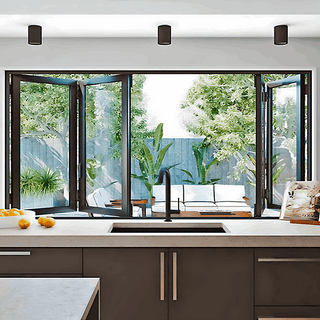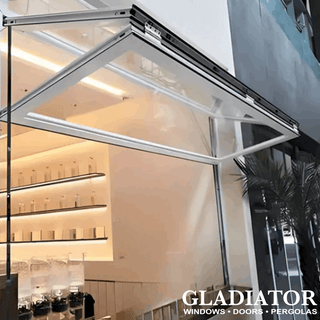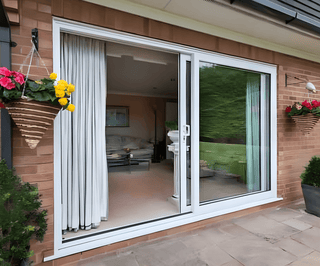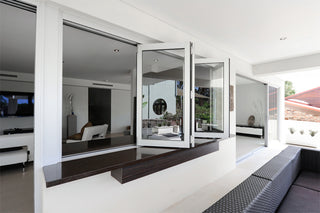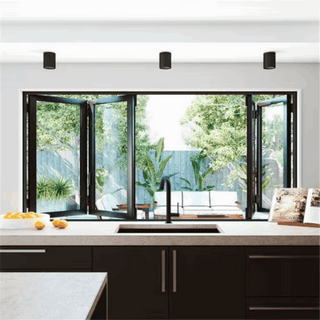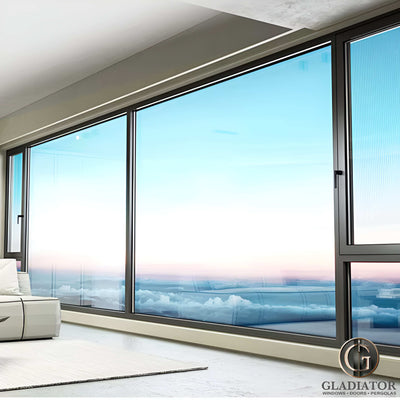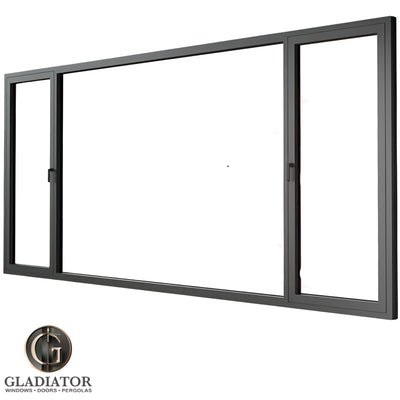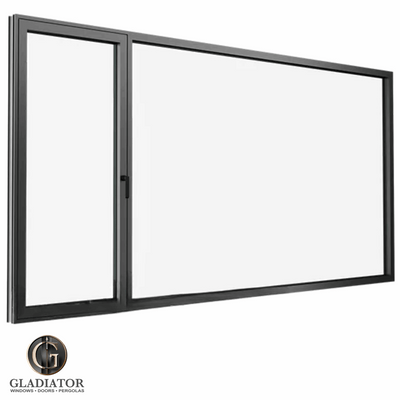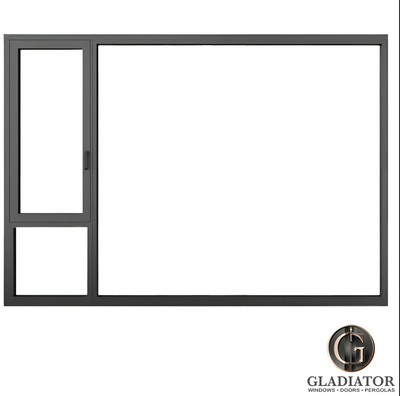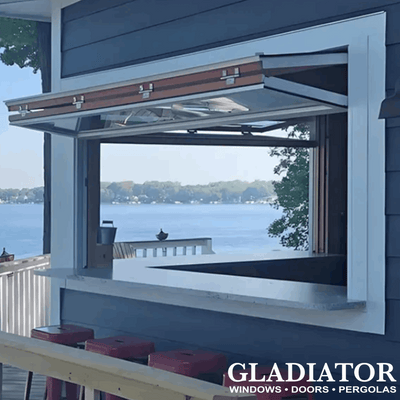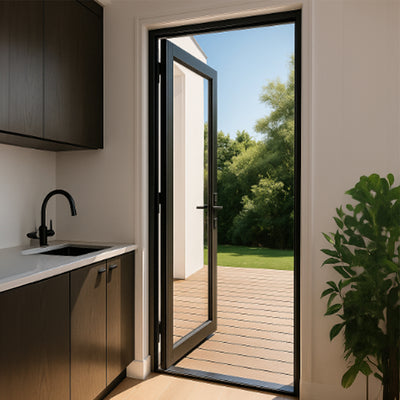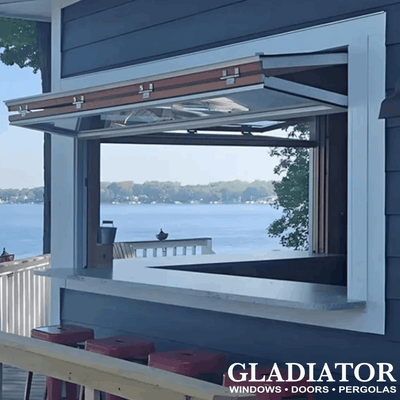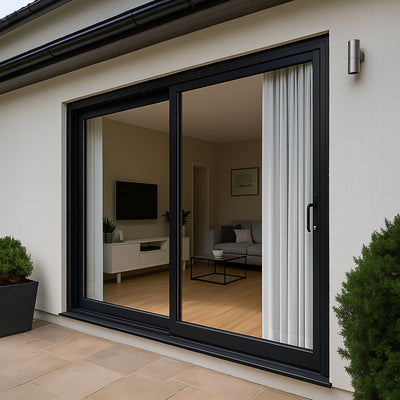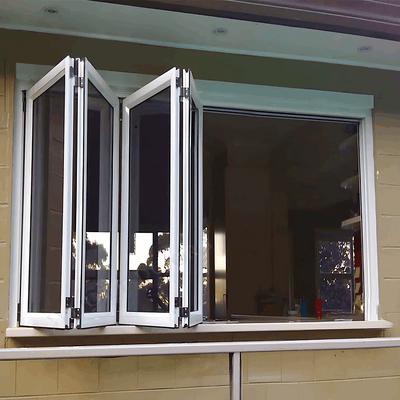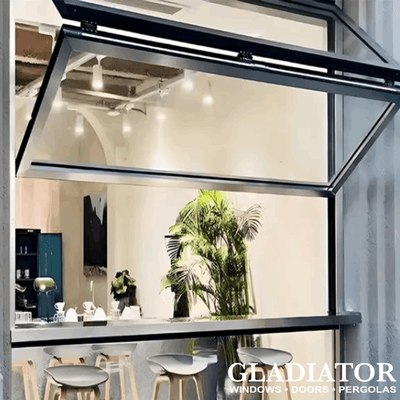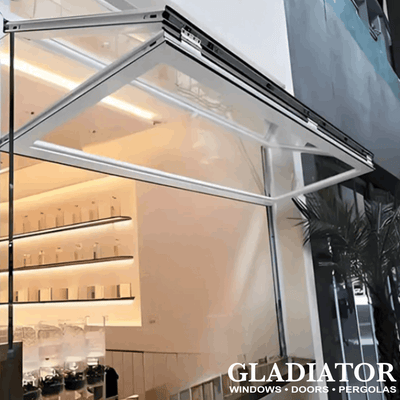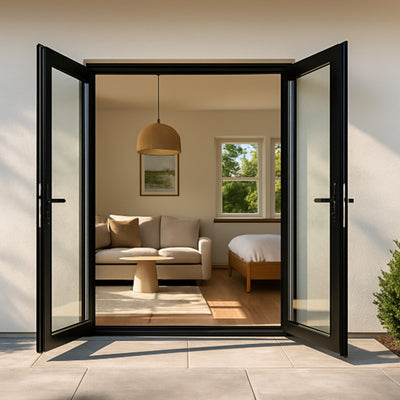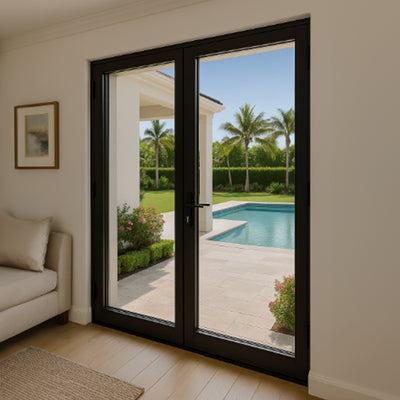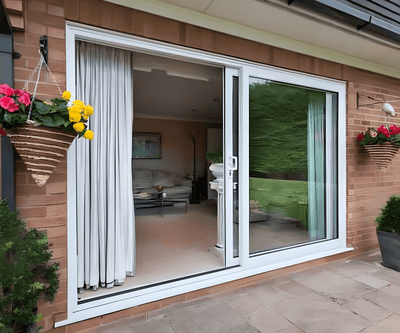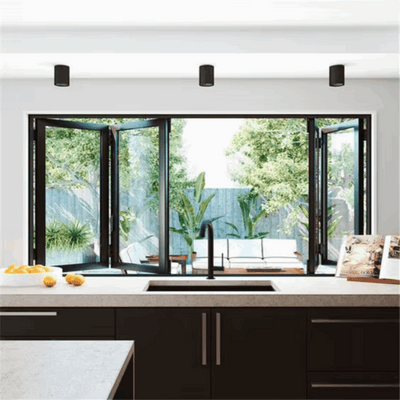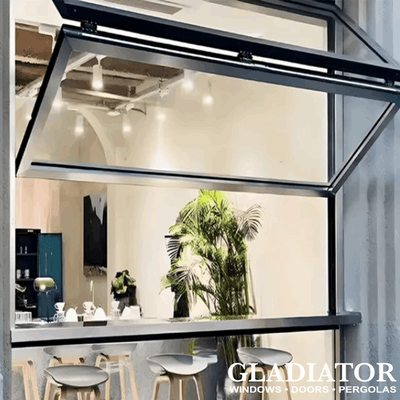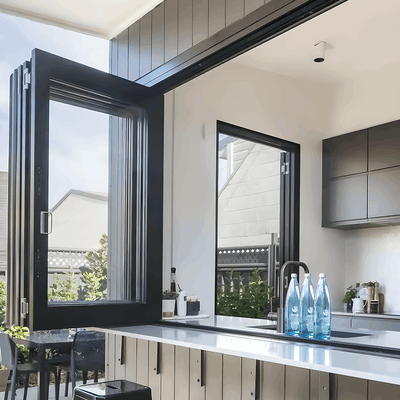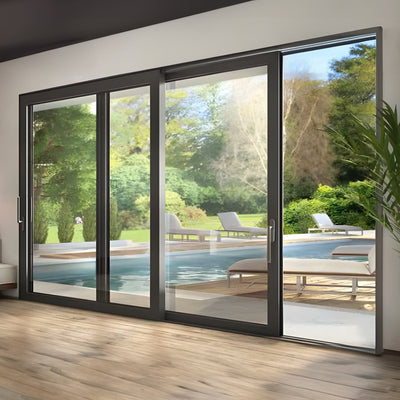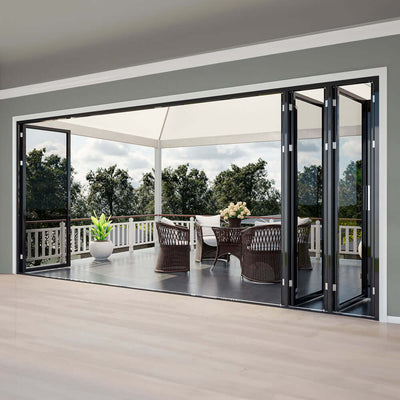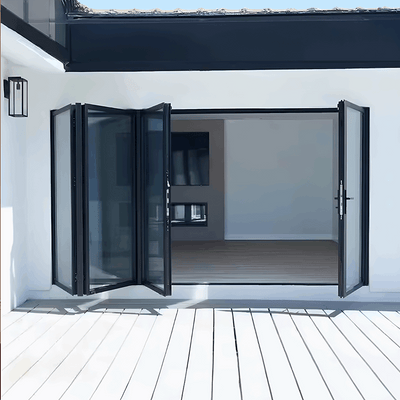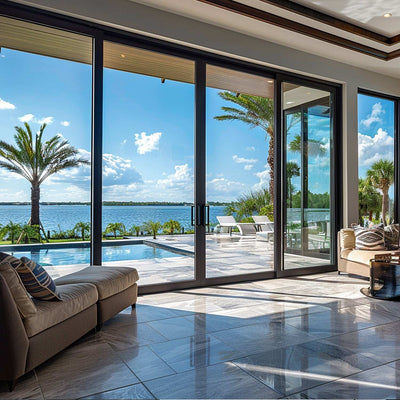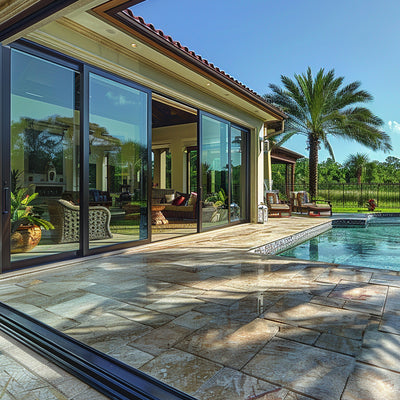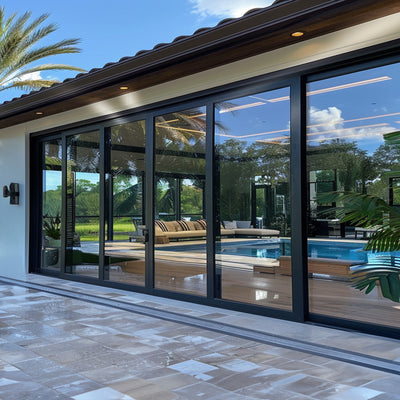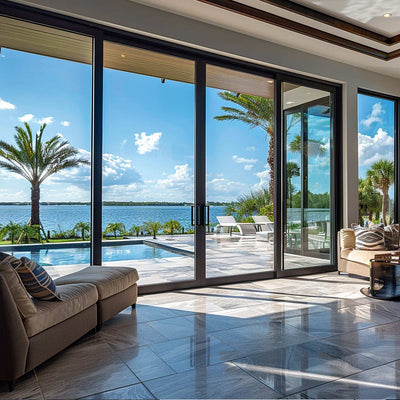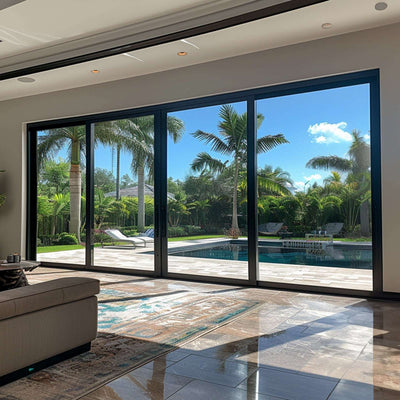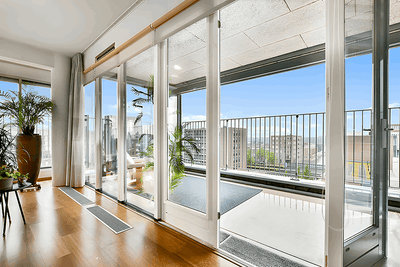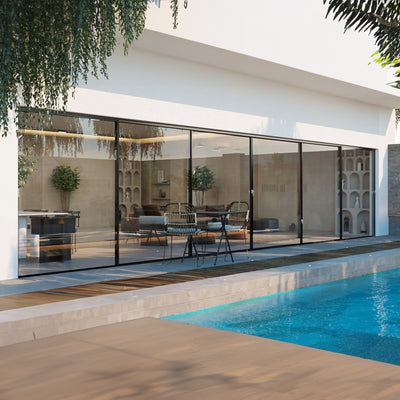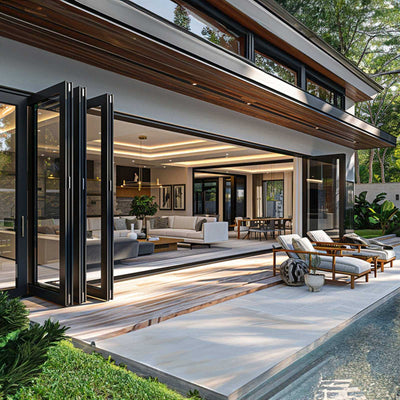The Real Impact of Energy Efficient Window Replacement
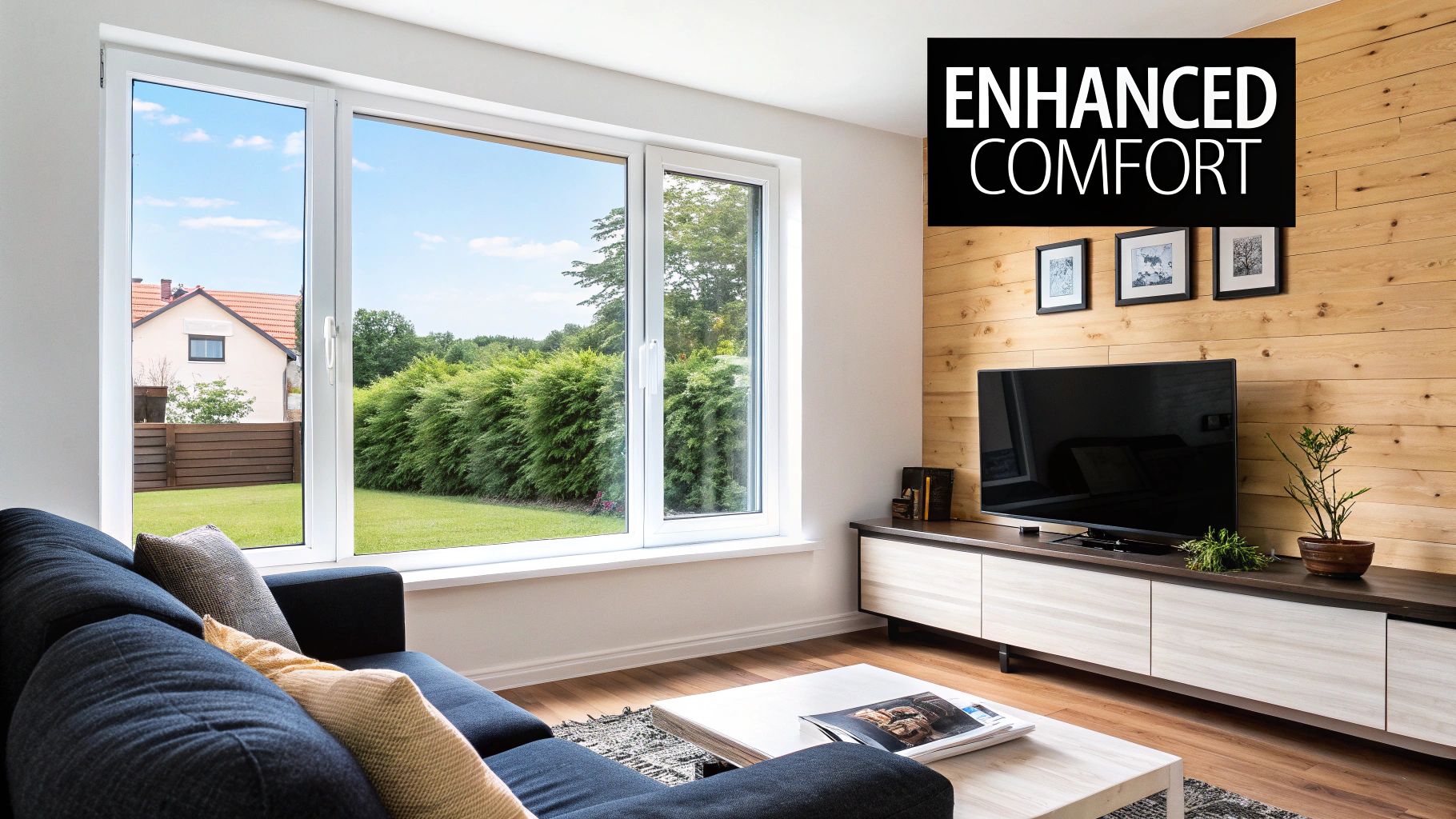
Your windows play a crucial role in your home's energy efficiency. Older windows often leak heat in the winter and allow too much sun inside during the summer. This can lead to higher energy bills and make your home less comfortable. Energy efficient window replacement is a great way to address these issues. Upgrading your windows can significantly improve your home’s thermal performance and create a more comfortable living space.
Understanding the Technology Behind Energy Efficiency
Modern energy-efficient windows use advanced technologies to minimize energy transfer. Low-E coatings are one key feature. These thin metallic coatings reflect infrared radiation, keeping heat inside during the winter and outside during the summer.
Another important component is the gas fills between the panes of glass. These inert gases, like argon or krypton, are denser than air and provide better insulation. Think of a down jacket: the trapped air pockets in the feathers offer great insulation. Gas fills work similarly in windows.
Finally, innovative frame materials like vinyl or fiberglass offer superior insulation compared to traditional aluminum frames.
Decoding Window Ratings
Choosing the right energy-efficient windows means understanding window ratings. The U-factor measures how well a window prevents heat from escaping. A lower U-factor indicates better insulation.
The Solar Heat Gain Coefficient (SHGC) measures how much solar heat a window lets in. A lower SHGC is ideal for warmer climates to prevent overheating. Air Leakage ratings measure how much air passes through cracks in the window. Lower air leakage means better draft protection. You can find more information on our blog sitemap.
The Financial Benefits of Upgrading
Replacing single-pane windows with energy-efficient models can save you money. According to the U.S. Department of Energy, homeowners can save between $125 and $340 annually with ENERGY STAR certified windows compared to single-pane windows. You can find more detailed statistics here.
These savings are particularly significant in colder climates with high heating costs. Besides lower energy bills, these windows also improve home comfort by reducing drafts and temperature fluctuations. While actual savings depend on factors like climate, home size, and energy use, energy-efficient window replacement is a smart investment that can increase comfort and potentially boost home value.
Double vs. Triple Pane: Making the Right Investment
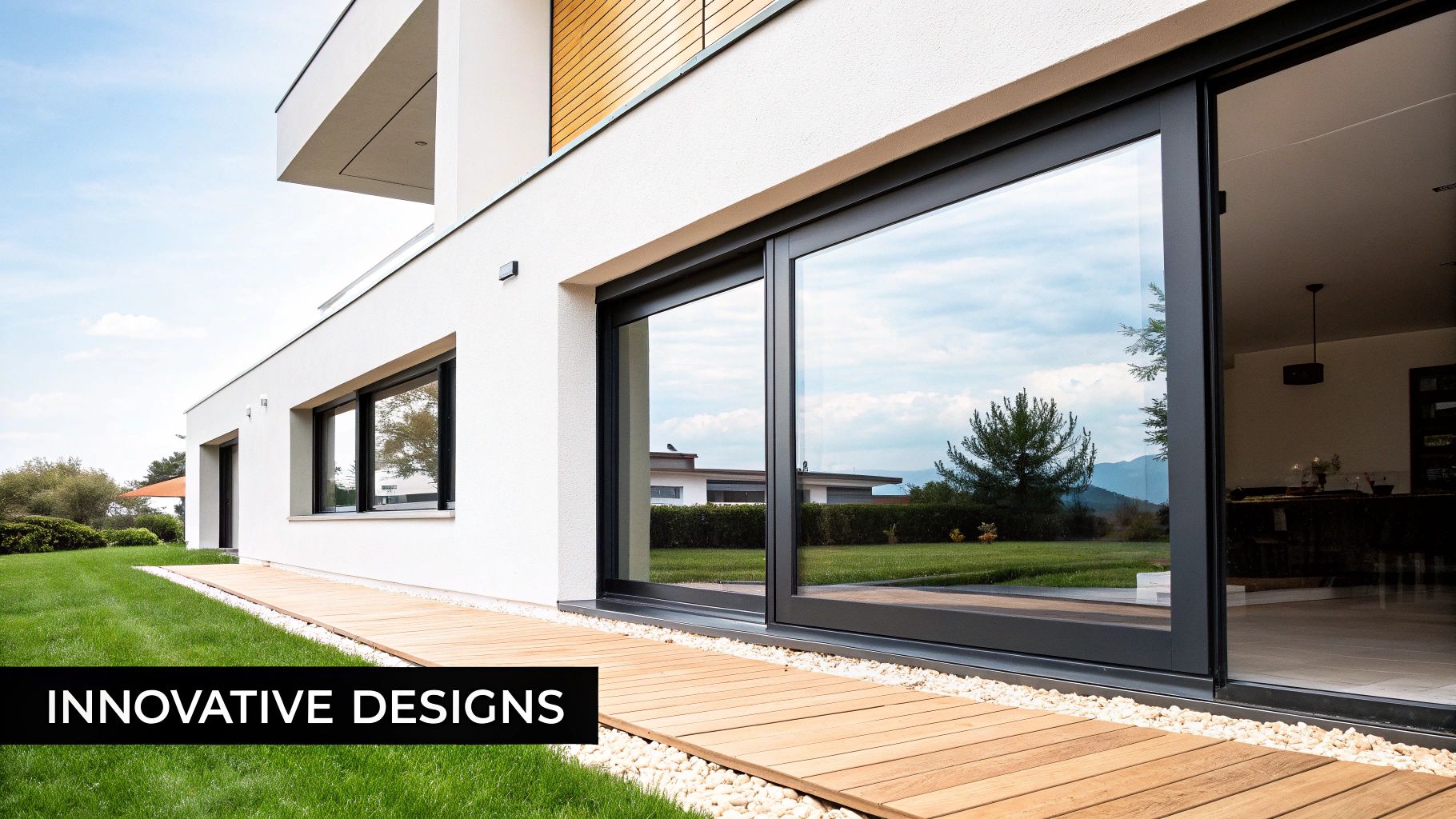
When considering energy-efficient window replacements, choosing between double and triple pane windows is crucial. This decision significantly impacts your home's energy efficiency, comfort, and budget. This guide will help you understand the differences and make the best choice.
Understanding the Core Differences
Double-pane windows consist of two panes of glass separated by a spacer filled with insulating gas. This design reduces heat transfer compared to single-pane windows. Triple-pane windows add a third pane and a second spacer, creating another insulating layer.
This extra pane further enhances energy efficiency and sound dampening. It's like adding an extra blanket to your bed in the winter – you'll stay even warmer.
Evaluating Performance Across Climates
The effectiveness of double vs. triple pane windows varies by climate. In milder climates, double-pane windows often suffice. However, in regions with extreme temperatures, triple-pane windows offer significant energy savings.
In colder climates, triple-pane windows reduce heat loss during winter. In hotter climates, they minimize heat gain in summer. This leads to lower energy bills year-round.
To help illustrate the key differences, let's take a look at the following comparison:
Double vs. Triple Pane Window Comparison
This table compares key features of double and triple pane windows to help homeowners choose the right option.
| Feature | Double Pane Windows | Triple Pane Windows |
|---|---|---|
| Number of Panes | 2 | 3 |
| Insulating Gas | Yes | Yes |
| Energy Efficiency | Good | Excellent |
| Sound Dampening | Good | Excellent |
| Condensation Resistance | Good | Excellent |
| Cost | Lower | Higher |
| Weight | Lighter | Heavier |
As this table shows, triple-pane windows offer superior performance in terms of energy efficiency, sound dampening, and condensation resistance. However, they come at a higher cost and are heavier than double-pane options.
Noise Reduction and Condensation Resistance
Triple-pane windows excel at noise reduction, ideal for homes near busy streets. The extra pane and gas fill disrupt sound waves more effectively. They offer better condensation resistance, too.
The inner pane of a triple-pane window stays closer to the indoor temperature, reducing condensation during cold weather. This keeps your windows clearer and your home more comfortable.
Considering Cost and Value
Triple-pane windows cost more due to increased materials and manufacturing complexity. However, long-term energy savings and increased comfort can offset the initial investment, especially in extreme climates.
Double-pane windows provide a good balance of cost and performance for many. Consider your climate and budget when deciding.
Making the Right Choice for You
The best choice depends on your individual needs and budget. Consider your climate, energy goals, and noise reduction needs. For additional information, explore resources like BKV Energy and Gladiator Window and Doors Products.
If unsure, consult a qualified window professional. They can help determine the most suitable option. For many homeowners, double-pane windows offer a cost-effective and efficient choice, especially when balancing cost and potential energy savings. In regions with extreme temperatures, the added insulation of triple-pane windows can provide significant energy savings, potentially reducing heating and cooling costs by up to 34% annually.
Navigating Costs and Capturing Hidden Incentives

While energy-efficient windows offer clear advantages, the initial investment can feel overwhelming. Understanding the various cost factors and available incentives, however, can make this home improvement surprisingly manageable. Enjoy increased comfort and lower energy bills without emptying your wallet. You might be interested in: Our Sitemap.
Decoding the True Cost Factors
The total cost of energy-efficient window replacement involves more than just the windows themselves. Several key factors contribute to the final price tag. Material selection plays a significant role.
For instance, wood frames generally come with a higher price tag than vinyl. Installation complexity is another important consideration. Larger or uniquely shaped windows often require specialized installation, leading to increased labor costs. The total number of windows needing replacement also directly impacts the overall project expenses.
Unlocking Hidden Incentives
Fortunately, a variety of incentives can significantly offset the cost of energy-efficient window replacements. Federal tax credits offer valuable assistance. The Bipartisan Act of 2018 reinstated these credits for energy-efficient home improvements, including windows.
Homeowners can claim a tax credit of up to $200, representing 10% of the window cost (excluding installation). This credit can make the investment more feasible, particularly when coupled with long-term energy savings. Furthermore, energy-efficient windows can boost your home's value, potentially resulting in higher resale prices. Explore this topic further here.
Many states and local utilities also provide rebates for energy-efficient upgrades. Manufacturer promotions and discounts offer additional avenues for savings. Combining these incentives strategically can dramatically reduce your overall expenses.
Exploring Financing Options and Phased Replacement
Specialized financing options tailored for energy efficiency projects can help manage costs. These programs often feature attractive terms not found with conventional lenders. Some loans, for example, are linked to the energy savings achieved by the improvements.
For homeowners on a tighter budget, a phased replacement approach can be a smart solution. This strategy focuses on replacing the windows with the highest energy loss first, maximizing impact while spreading the cost over time.
To help you understand the potential costs involved, take a look at the table below:
Average Cost Breakdown for Window Replacement This table presents typical cost ranges for different types of energy efficient windows by material and style.
| Window Type | Materials Cost Range | Installation Cost Range | Total Cost Per Window |
|---|---|---|---|
| Double-Hung Vinyl | $300 - $700 | $200 - $400 | $500 - $1100 |
| Casement Vinyl | $350 - $750 | $250 - $450 | $600 - $1200 |
| Double-Hung Wood | $600 - $1200 | $300 - $500 | $900 - $1700 |
| Casement Wood | $700 - $1300 | $350 - $550 | $1050 - $1850 |
| Double-Hung Fiberglass | $800 - $1500 | $400 - $600 | $1200 - $2100 |
| Casement Fiberglass | $900 - $1600 | $450 - $650 | $1350 - $2250 |
As you can see, the cost of window replacement can vary significantly depending on the materials and style you choose. Fiberglass windows generally offer the highest level of energy efficiency, but they also come with a higher price tag. Vinyl windows are the most budget-friendly option. Carefully consider your needs and budget when making your selection.
Maximizing Your Return on Window Investment
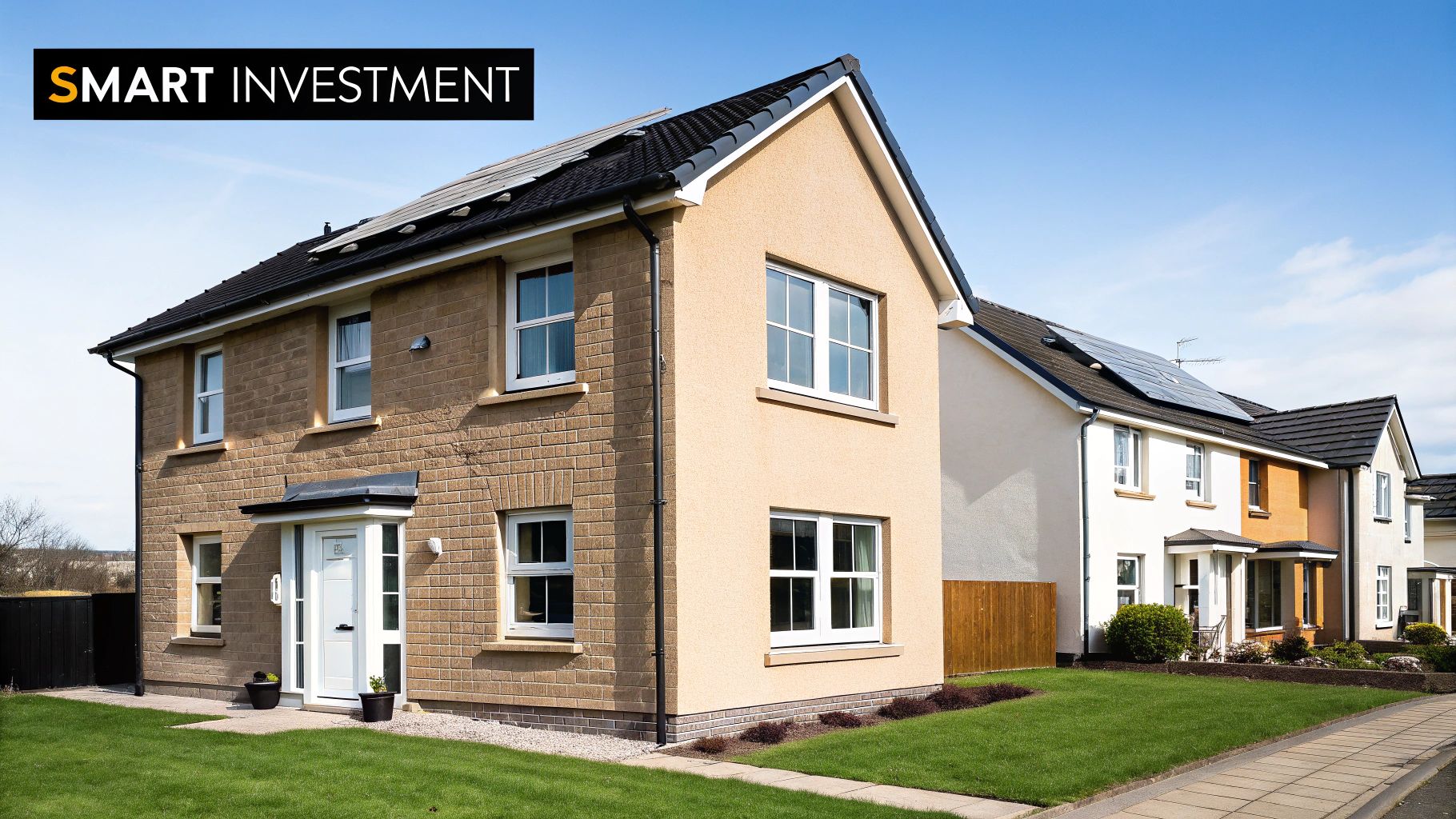
Energy-efficient window replacement offers substantial financial benefits beyond simply lowering your monthly energy bills. These windows can significantly impact your property value, its overall marketability, and how prospective buyers view your home. Understanding the complete financial picture is key to making smart decisions.
Strategic Prioritization for Maximum Savings
Replacing every window at once can be a considerable expense. A more strategic approach involves prioritizing windows based on a few key factors. South-facing windows, for instance, receive the most sunlight, contributing significantly to heat gain during summer.
Prioritizing these windows for energy-efficient upgrades can drastically reduce cooling costs. Also, evaluate the current thermal performance of your windows. Focus on replacing windows with the highest U-factor and air leakage first to achieve maximum energy savings. Local climate conditions, like prevailing winds and shade from trees, should also factor into your prioritization strategy.
Complementary Improvements for Enhanced Efficiency
Energy-efficient windows work best within a holistic approach to home energy efficiency. Insulation upgrades, such as those offered by Owens Corning, complement window replacements by minimizing heat transfer through walls, roofs, and floors. This amplifies the positive impact of your new windows.
Thoughtful landscaping can also boost window performance. Deciduous trees planted on the south side of your home offer shade in the summer, reducing solar heat gain, while allowing sunlight through in the winter after their leaves fall. These complementary improvements work synergistically with energy-efficient window replacements.
Impact on HVAC System Lifespan and Sizing
Improved thermal performance lessens the burden on your HVAC system. This means your heating and cooling equipment doesn't need to work as hard to maintain comfortable indoor temperatures, potentially adding years to its lifespan. Lower energy consumption can also allow for downsizing your HVAC system during future replacements.
A smaller, higher-efficiency system can further decrease your energy bills and shrink your environmental footprint. While energy-efficient windows provide substantial savings, it's important to have realistic expectations regarding their return on investment. Learn more about the long-term cost benefits of energy-efficient windows here. Considering the combined benefits of energy savings, increased home value, potential tax credits, and improved comfort allows for well-informed decisions. For homeowners, recouping roughly 78% of the cost at resale, combined with potential tax credits and increased comfort, makes energy-efficient windows a worthwhile investment.
Selecting Window Features That Actually Matter
Energy-efficient window replacement is a multifaceted process. It's not as simple as just choosing double or triple panes. Understanding the various features that contribute to energy efficiency can significantly impact your long-term satisfaction and your return on investment.
Frame Materials: Balancing Insulation and Aesthetics
The frame material plays a crucial role in a window's energy efficiency. Vinyl frames offer excellent insulation and are low-maintenance. Wood frames provide good insulation, but they require regular upkeep to prevent rot and warping. Fiberglass frames excel at reducing heat transfer and are highly durable, but they often come at a higher price. Consider your local climate, maintenance requirements, and budget when making your selection.
Advanced Glass Technologies: Maximizing Energy Performance
Modern glass technologies are constantly improving window energy efficiency. Low-E coatings, for example, reflect infrared and ultraviolet light, helping to control indoor temperatures throughout the year. Learn more in this article about window materials, durability, and lifespan. These coatings help keep heat inside during the winter and outside during the summer. Gas fills, such as argon or krypton between the panes, further enhance insulation by reducing heat transfer through the glass.
Spacer systems are essential for preventing thermal bridging, which is the transfer of heat across the space between the glass panes. Opting for high-performance spacers can significantly improve a window's insulating properties.
Operational Styles and Air Sealing
Different window operational styles offer varying degrees of air sealing. Casement windows, which swing outward, typically provide better air sealing than double-hung windows. This tight seal minimizes drafts and boosts energy efficiency. However, it's also important to consider your ventilation needs. Some styles, like awning windows, are designed for better ventilation while still offering decent air sealing.
Beyond Energy Efficiency: UV Protection, Sound Dampening, and Security
While energy efficiency is a primary concern, other features contribute to a window's overall performance and comfort. UV protection coatings help prevent furniture fading and sun damage to interior finishes. Sound dampening technologies reduce noise pollution, creating a more peaceful indoor environment. Reinforced frames and robust locking mechanisms enhance security, providing peace of mind. Check out this guide on various window and door options.
Justifying Premium Pricing
Certain window features command a higher price due to their significant impact on energy efficiency and long-term performance. For example, triple-pane glass with advanced low-E coatings and gas fills provides superior insulation compared to standard double-pane windows. While the upfront investment is higher, the resulting energy savings and enhanced comfort can offset the additional cost over time. Similarly, high-performance frame materials and specialized spacer systems contribute to increased energy efficiency and durability, justifying their premium pricing. Carefully evaluate the benefits against your budget to make a well-informed decision.
Installation Excellence: The Make-or-Break Factor
Even the highest quality energy-efficient windows can underperform if not installed correctly. This section reveals the crucial installation standards that determine whether your investment delivers the promised energy savings or becomes a costly mistake.
Proper Measurement and Structural Preparation
Accurate measurements are the foundation of a successful window installation. Incorrect measurements can lead to gaps and air leaks, compromising energy efficiency and potentially causing water damage. It's like building a house on a shaky foundation – the entire structure is at risk.
Proper structural preparation is equally important. This includes ensuring the window opening is square, plumb, and level. Any irregularities in the opening must be addressed before installation to ensure a proper fit and seal. This preparation work sets the stage for a smooth and effective installation.
Flashing and Insulation: Creating a Complete Thermal System
Flashing, the material used to seal around the window frame, is vital for preventing water intrusion. Improper flashing can lead to rot, mold, and expensive repairs. Think of it as the waterproofing layer that safeguards your home from the elements.
Effective insulation around the window frame further enhances energy efficiency by minimizing heat transfer. Expanding foam insulation is commonly used to fill gaps and create an airtight seal, locking in comfort and minimizing energy loss.
Identifying Qualified Installers
Choosing a qualified installer is as important as selecting the right windows. Ask potential installers about their experience with energy-efficient window installations and their familiarity with local building codes. Experience matters when it comes to ensuring a proper and long-lasting installation.
Inquire about their measurement techniques, structural preparation methods, and flashing and insulation practices. A knowledgeable installer will readily discuss these critical details and provide references upon request. Don't hesitate to ask questions – it's your investment.
Verification and Manufacturer Specifications
After installation, verify the work meets manufacturer specifications and local building codes. Check for proper sealing, operation, and finishing. Inspect the flashing and insulation for completeness and quality. A thorough inspection is crucial to catching any potential issues early on. You can explore further details on costs and incentives here.
DIY vs. Professional Installation
While some smaller window replacement projects may be suitable for DIY installation, most energy-efficient window installations require specialized expertise. Complex installations, particularly those involving larger windows or unique architectural features, demand the skills of experienced professionals to ensure optimal performance and prevent costly water damage.
Proper installation is essential for achieving the energy performance targets of your new windows and protecting your investment. Don't let poor installation compromise the benefits of your energy-efficient window replacement. A professional installation is an investment in the long-term performance and value of your home.
Ready to Upgrade Your Windows?
Gladiator Window and Doors offers a wide selection of high-quality, energy-efficient windows and doors, professionally installed to maximize performance and enhance your home's comfort and value. Visit us today to explore our products and request a free consultation!

















